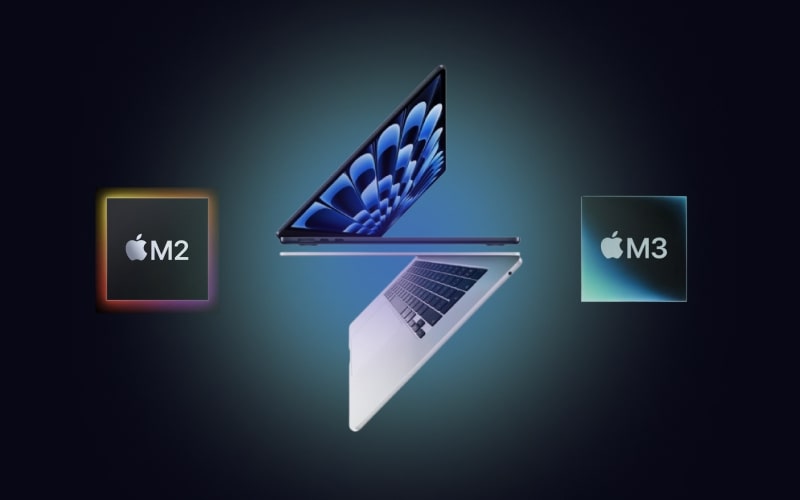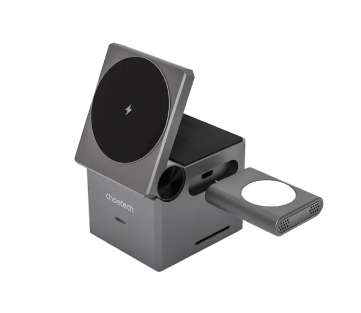Apple’s MacBook Air has been the go-to laptop for students, professionals, and casual users who want something lightweight yet powerful. When the M2 model launched, it was a game-changer, offering a major boost over the M1. But now, the MacBook Air M3 is here, and the question is: Should you upgrade? If you’re debating between the M2 and M3, this guide will walk you through everything—performance, battery life, display, ports, and real-world usability—so you can make the right decision.
Table of Contents
MacBook Air M2 vs M3: The Verdict
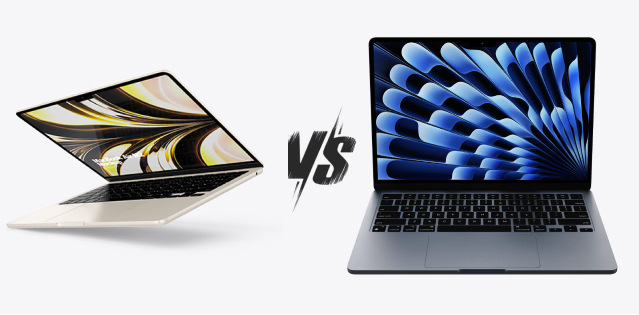
Let’s cut to the chase. If you already have an M2 MacBook Air, the M3 upgrade isn’t a must. The changes are mostly refinements, not massive leaps. However, if you’re coming from an older Intel MacBook or even an M1, the M3 is absolutely worth considering. Here’s the breakdown:
- Best for Performance – M3, thanks to its efficiency and slightly better GPU.
- Best for Battery Life – Tie. Both models are nearly identical in endurance.
- Best for Value – M2, especially if you can snag a discounted deal.
- Best for Future-Proofing – M3, because it’s newer and will get software support for longer.
Now, let’s dive into the details and see exactly how these two models compare.
MacBook Air M2 vs M3: Detailed Comparison
| Feature | MacBook Air M2 | MacBook Air M3 |
| CPU | 8-core CPU | 8-core CPU |
| GPU | Up to 10-core GPU | Up to 10-core GPU with Dynamic Caching and hardware-accelerated ray tracing |
| Performance | Fast and reliable for everyday tasks | Slightly better performance, especially in graphics-intensive tasks |
| Battery Life | Up to 18 hours (real-world: 14-16 hours) | Up to 18 hours (real-world: 14-16 hours, slightly more efficient) |
| Display | 13.6-inch Liquid Retina, 500 nits | Same as M2, with improved HDR support |
| Ports and Connectivity | 2x Thunderbolt/USB 4, MagSafe, Wi-Fi 6, Bluetooth 5.0 | Same ports, Wi-Fi 6E, Bluetooth 5.3 |
| Storage and RAM | 256GB to 2TB SSD, 8GB to 24GB RAM | Same storage and RAM options |
| Price | Starts at $999 (often discounted) | Starts at $1,099 (13-inch), $1,299 (15-inch) |
1. Performance: CPU, GPU, and Efficiency
M2: Fast and Reliable
The M2 chip brought a solid jump from M1, offering an 8-core CPU and up to a 10-core GPU. It handled everyday tasks effortlessly, whether you were browsing, editing videos, or running multiple apps.
M3: A Slight Bump Up
Apple didn’t reinvent the wheel with the M3. The core count remains the same—8-core CPU and up to a 10-core GPU. However, the biggest difference is the introduction of hardware-accelerated ray tracing and Dynamic Caching. These features make gaming and 3D applications run smoother, but in daily usage? You might not notice much unless you’re working with heavy graphics.
Winner: M3 (but not by much)
The M3’s improvements are noticeable only in demanding workloads. If you’re just writing emails, browsing, or streaming, the M2 is just as good.
2. Battery Life: Does M3 Improve Anything?
Apple claims both the M2 and M3 models last up to 18 hours on a single charge. In real-world use, you can expect 14-16 hours depending on your workload. The M3 is slightly more power-efficient, meaning you might squeeze out an extra hour under specific conditions, but it’s not a night-and-day difference.
Winner: Tie
Both laptops are incredible in terms of battery life.
| Usage Type | Example Activities | MacBook Air M2 | MacBook Air M3 |
| Light Use | Browsing, watching YouTube, working on Google Docs | 16-18 hours | 17-18.5 hours |
| Medium Use | Video calls, photo editing, multiple browser tabs, streaming music | 12-14 hours | 13-15 hours |
| Heavy Use | Coding, 4K video editing, gaming, running virtual machines | 7-9 hours | 8-10 hours |
3. Display: Any Differences?
The display on both models is a 13.6-inch Liquid Retina panel with 500 nits of brightness. It’s sharp, vibrant, and one of the best displays on an ultrabook.
One small upgrade with the M3? Support for HDR video playback is slightly improved. If you’re a content creator, this might matter to you, but for general users, it’s not a game-changer.
Winner: Tie (unless you really care about HDR)
4. Ports and Connectivity
MacBook Air users have been stuck with just two USB-C ports and a MagSafe charging port since the M2 refresh. Unfortunately, the M3 doesn’t change that. You still won’t find an HDMI port or an SD card slot here—those remain exclusive to the MacBook Pro lineup.
One notable upgrade, however, is Wi-Fi 6E support on the M3. But what does that actually mean?
Wi-Fi 6E is an enhanced version of Wi-Fi 6 that unlocks access to the 6 GHz frequency band, in addition to the usual 2.4 GHz and 5 GHz bands. This means:
- Faster speeds – Less congestion, so downloads, streaming, and cloud-based work are smoother.
- Lower latency – More responsive connections, which is great for video calls, gaming, and large file transfers.
- Less interference – The 6 GHz band is newer and less crowded, making connections more reliable in busy environments.
However, there’s a catch: You’ll only benefit if you have a Wi-Fi 6E-compatible router. Without one, your MacBook Air M3 will still connect via Wi-Fi 6 or older standards, meaning you won’t notice much of a difference.
Winner: M3, but barely
If you need an HDMI port, you’ll still need to carry a dongle.
5. Storage and RAM: Future-Proofing Matters
Apple made a controversial move with the base model M2 MacBook Air, which comes with a 256GB SSD using a single NAND chip—leading to noticeably slower read and write speeds, impacting file transfers and overall system responsiveness.The M3’s base model has the same issue, so unless you upgrade to 512GB or more, which is recommended for tasks like video editing, coding, or heavy multitasking.
RAM options remain 8GB, 16GB, or 24GB, and if you’re a power user, 16GB is the sweet spot for longevity.
Winner: Tie (unless you upgrade storage, then M3 pulls ahead)
6. Price: Where’s the Best Value?
Here’s the pricing breakdown:
- MacBook Air M2 (13-inch): Starts at $999 (often discounted to ~$899).
- MacBook Air M3 (13-inch): Starts at $1,099.
- MacBook Air M3 (15-inch): Starts at $1,299.
The M2 model is the better value if you find it on sale. But if you’re spending over $1,000, it might be worth stretching your budget for the M3.
Winner: M2, if you want the best deal
Accessories and Must-Have Add-ons for Your MacBook Air
Looking to enhance your MacBook experience? Here are some accessories that can take your setup to the next level:
1. Mchose GX87 Aluminum Mechanical Keyboard
If you want a satisfying typing experience, the Mchose GX87 mechanical keyboard is a game-changer. With its premium aluminum build, tactile switches, and customizable RGB lighting, it pairs beautifully with a MacBook Air.

2. Anker USB-C Hub: More Ports, More Convenience
MacBook Airs lack ports, so a USB-C hub is a must. Anker’s hubs give you extra USB-A, HDMI, and SD card slots, making your MacBook more versatile.
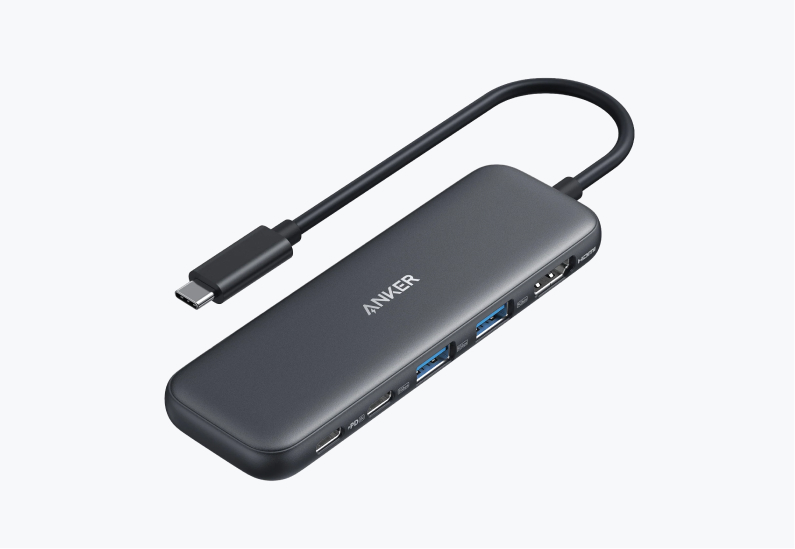
3. Satechi Aluminum Stand: Better Ergonomics
A laptop stand improves posture and airflow, reducing overheating and making long work sessions more comfortable.
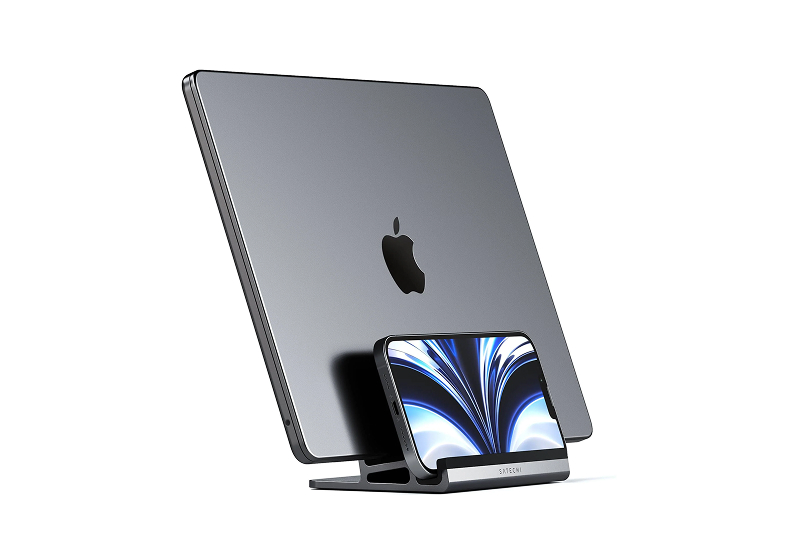
4. External SSD: Fast and Portable Storage
If 256GB isn’t enough, get a Samsung T7 SSD. It’s lightweight, fast, and perfect for storing large files.
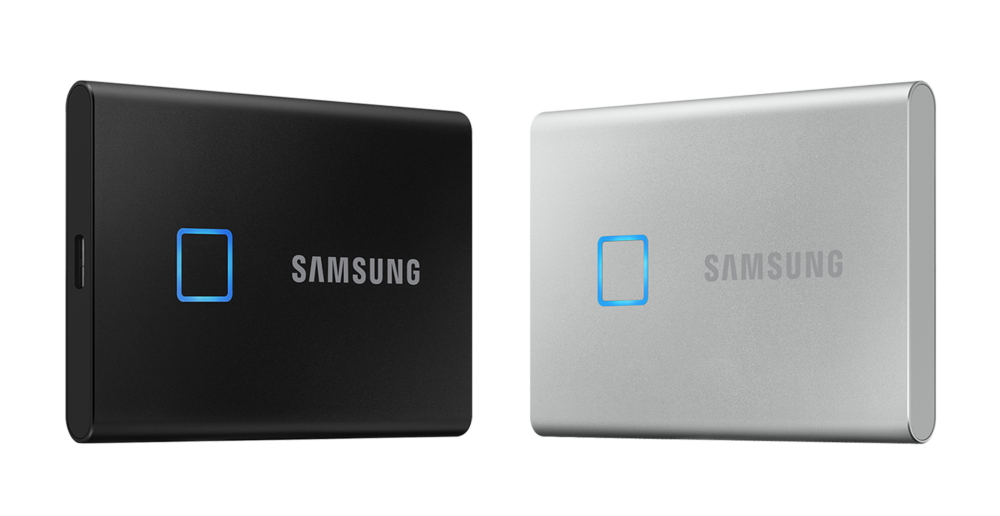
Conclusion: Which One Should You Buy?
Deciding between the MacBook Air M2 and M3 depends on your priorities. If you’re looking for the best value for money, the M2 is still a fantastic option, especially if you can find it at a discount. It delivers solid performance, great battery life, and the same sleek design as the M3 without breaking the bank.
If you prefer future-proofing, need better GPU performance for creative work or gaming, or want Wi-Fi 6E for faster wireless connectivity, then the M3 is the better choice. While the upgrades aren’t drastic, they do provide an edge in the long run.
No matter which model you choose, accessorizing can make a big difference. A high-quality mechanical keyboard, a USB-C hub, an ergonomic stand, and an external SSD can help you get the most out of your MacBook Air.
At the end of the day, both laptops are excellent choices. If budget is your main concern, go for the M2. If you want to stay ahead of the curve, the M3 is the way to go. Either way, your MacBook Air will be a reliable, high-performing companion for years to come.

